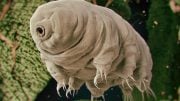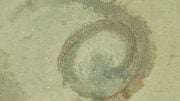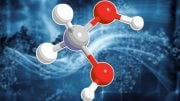
Increasing temperatures can weaken the structure of individual SARS-Cov-2 particles on surfaces, making them less infectious. Humidity has minimal impact. As temperatures drop, particles on surfaces may stay infectious for longer.
Study of individual SARS-CoV-2-like particle degradation suggests a potential surge of COVID-19 infections in the winter.
Winter is coming in the northern hemisphere on Monday, December 21, 2020, and public health officials are asking how the seasonal shift will impact the spread of SARS-CoV-2, the virus that causes COVID-19?
A new study tested how temperatures and humidity affect the structure of individual SARS-Cov-2 virus-like particles on surfaces. They found that just moderate temperature increases broke down the virus’ structure, while humidity had very little impact. In order to remain infectious, the SARS-Cov-2 membrane needs a specific web of proteins arranged in a particular order. When that structure falls apart, it becomes less infectious. The findings suggest that as temperatures begin to drop, particles on surfaces will remain infectious longer.
This is the first study to analyze the mechanics of the virus on an individual particle level, but the findings agree with large-scale observations of other coronaviruses that appear to infect more people during the winter months.
“You would expect that temperature makes a huge difference, and that’s what we saw. To the point where the packaging of the virus was completely destroyed by even moderate temperature increases,” said Michael Vershinin, assistant professor in the Department of Physics & Astronomy at the University of Utah and co-senior author of the paper. “What’s surprising is how little heat was needed to break them down—surfaces that are warm to the touch, but not hot. The packaging of this virus is very sensitive to temperature.

A group of SARS-CoV-2 virus-like particles is shown in panel (A) on a glass surface in room temperature. The color scale describes the height of each particle–red is the tallest and dark blue is the flattest. (B) Virus-like particles imaged at about 93 degrees F (34 degrees C) under dry conditions. There are no discernable features of the particles in panel A, indicating the particle structure degraded. (C) The virus-like particles that were incubated at about 93 degrees F (34 degrees C) in a buffer solution, and imaged at room temperature. The particles are more consistent with A, but still reveal widespread structural degradation. Credit: Sharma et. al. (2020) Biochem Biophys Res Comms
The paper published online on November 28, 2020, in the journal Biochemical Biophysical Research Communications. The team also published a separate paper on December 14, 2020, in Scientific Reports describing their method for making the individual particle packaging. The virus-like particles are empty shells made from the same lipids and three types of proteins as are on active SARS-Cov-2 viruses, but without the RNA that causes infections. This new method allows scientists to experiment with the virus without risking an outbreak.
The SARS-CoV-2 is commonly spread by exhaling sharply, (e.g. sneezing or coughing), which ejects droplets of tiny aerosols from the lungs. These mucus-y droplets have a high surface-to-volume ratio and dry out quickly, so both wet and dry virus particles come into contact with a surface or travel directly into a new host. The researchers mimicked these conditions in their experiments.
They tested the virus-like particles on glass surfaces under both dry and humid conditions. Using atomic force microscopy they observed how, if at all, the structures changed. The scientists exposed samples to various temperatures under two conditions: with the particles inside a liquid buffer solution, and with the particles dried out in the open. In both liquid and bare conditions, elevating the temperature to about 93 degrees F for 30 minutes degraded the outer structure. The effect was stronger on the dry particles than on the liquid-protected ones. In contrast, surfaces at about 71 degrees F caused little to no damage, suggesting that particles in room temperature conditions or outside in cooler weather will remain infectious longer.
They saw very little difference under levels of humidity on surfaces, however, the scientists stress that humidity likely does matter when the particles are in the air by affecting how fast the aerosols dry out. The research team is continuing to study the molecular details of virus-like particle degradation.
“When it comes to fighting the spread of this virus, you kind of have to fight every particle individually. And so you need to understand what makes each individual particle degrade,” Vershinin said. “People are also working on vaccines and are trying to understand how the virus is recognized. All of these questions are single-particle questions. And if you understand that, then that enables you to fight a hoard of them.”
References:
“Minimal system for assembly of SARS-CoV-2 virus like particles” by Heather Swann, Abhimanyu Sharma, Benjamin Preece, Abby Peterson, Crystal Eldridge, David M. Belnap, Michael Vershinin and Saveez Saffarian, 14 December 2020, Scientific Reports.
DOI: 10.1038/s41598-020-78656-w
“Structural stability of SARS-CoV-2 virus like particles degrades with temperature” by A. Sharma, B. Preece, H. Swann, X. Fan, R. J. McKenney, K. M. Ori-McKenney, S. Saffarian, M. D. Vershinin, 28 November 2020, Biochemical Biophysical Research Communications.
DOI: 10.1016/j.bbrc.2020.11.080
Abhianyu Sharma, Benjamin Preece, Heather Swann, and Saveez Saffarian of the University of Utah and Xiangyu Fan, Richard .J. McKenney and Kassandra M. Ori-McKenney of University of California, Davis were also authors of the Biochem Biophys Res Comms study. Heather Swann, Abhimanyu Sharma, Benjamin Preece, Abby Peterson, Crystal Eldridge, David M. Belnap and Saveez Saffarian of the University of Utah also co-authored the Scientific Reports study.









Be the first to comment on "Particle Testing Has Scientists Expecting a New Surge of COVID-19 Infections – Here’s Why"